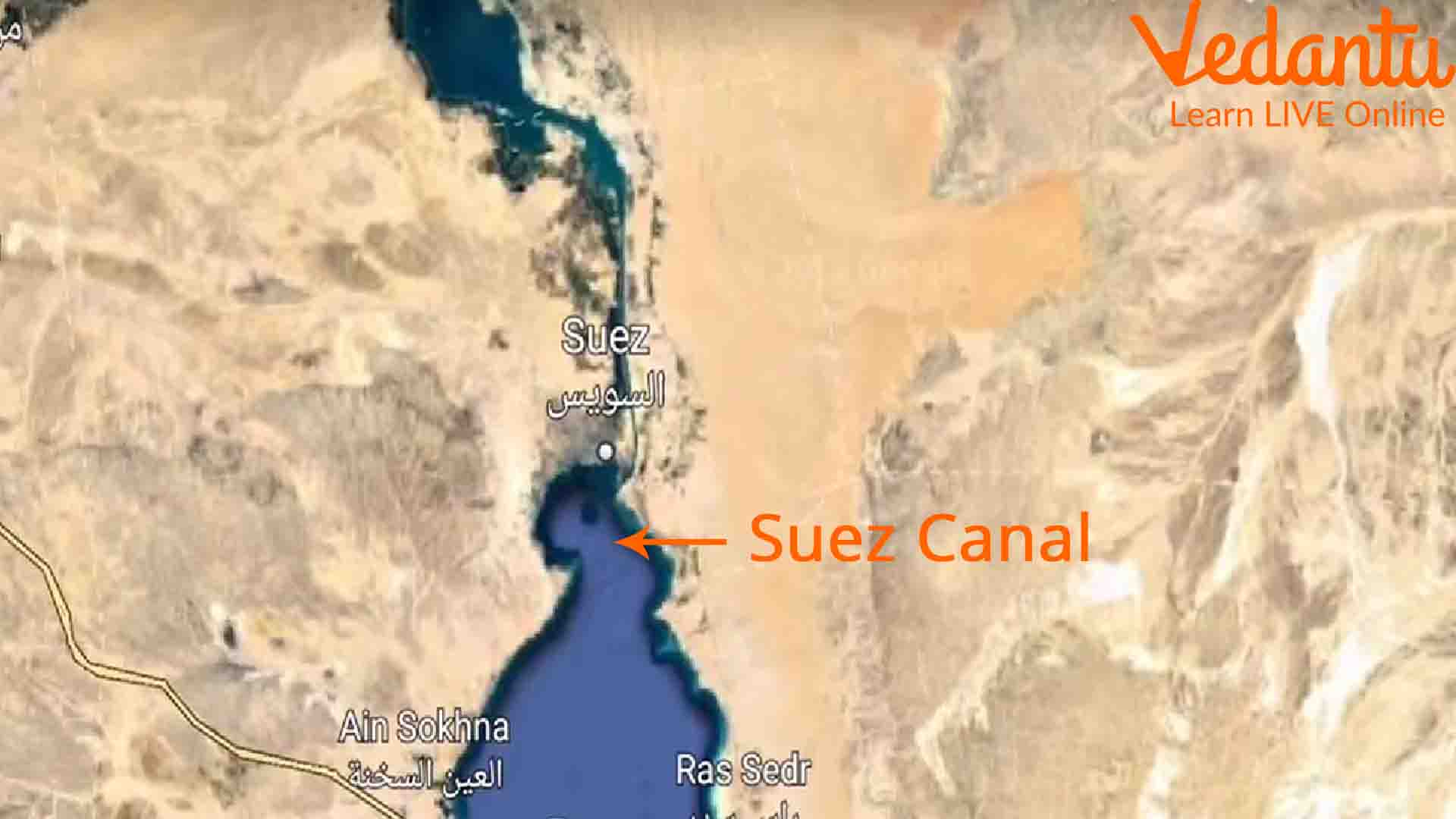Suez Canal: Its Importance in the World Sea Route Trade
It was in March 2021 that a 400-metre ship blocked the way of the Suez Canal and caused a huge loss. It was a 20,000 TEU (twenty feet equivalent unit – a measurement unit for cargo capacity) cargo ship that got stuck in the canal for days due to strong winds and sand.
Due to the blockage of this waterway for days, the important trade route suffered a massive blow. It was estimated that nearly US$ 90 million in revenue was lost in 7 days of blockage. It shows how important this canal is for the world trade routes. Let us find out more about this human made canal and find out its importance in the world economy.
What is the Suez Canal?
The Suez Canal is an artificial waterway made to connect the Red Sea to the Mediterranean Sea through the Suez Isthmus. It is a human made canal that extends up to 193.3 km. The width of the Suez Canal is 205 m. Its depth is 24 metres. The prime aim of digging this huge canal was to create a trade route. The construction started under the leadership of Ferdinand de Lesseps, the founder of the Suez Canal Company. You can tell this when asked to give a brief description of the Suez Canal.
The construction took 10 years to complete in 1869. It also divided the Asian and African continents' land connections. The Suez Canal map suggests how ships can access a direct route to connect the north Indian oceans and North Atlantic sea routes via the routes of the Mediterranean Sea. It also connects the Red Sea and avoids the South Indian and South Atlantic Oceans. Thus, it reduces the journey distance to a huge extent. For example, the distance between London and the Arabian Sea was reduced by 8900 km.

Map of Suez Canal Showing its Importance
The Ever Given Incident 2021
Ever Given, a huge ship of length 400 m got stuck for 106 days in the canal. The waterway was blocked for 7 days resulting in a huge loss to the countries involved in international trade. The ship got stuck diagonally and blocked the traffic. No ship could go out or come in. Within a week, it was estimated that it cost a huge loss of US$ 90 million in total.
Things turned out very messy when the ship got stuck. It became the headlines for the world. You will be surprised to know how the shop was rescued. The Suez Canal Authority brought small excavators and bulldozers to dig out the sand and free the ship’s front and rear ends.
The huge jam in the sea route traffic finally was freed from a 7-day blockage. People celebrated the reopening of the sea route and world trade resumed its natural pace. We can clearly understand how this canal is one of the busiest trade routes in the world.
Importance of Suez Canal in World Trade
The transcontinental business routes are generally carried through seas and oceans. Our aeroplanes and carriers are not that fuel and volume-efficient to carry such huge cargo from one continent to the other. It means the sea routes are the most important ones to carry on trade.
As per the International Chamber of Shipping, a total of 50,000 merchant ships travel across the world covering all the sea trade routes. With these ships, we cover almost 90% of the international trade requirements. Imagine the huge capacity of these ships that covers the requirement of big continents every year.
As we know that the Suez Canal connects the Mediterranean Sea with the Red Sea through the Suez Isthmus, we clearly understand how important this side of the sea trade route is. It is located in Egypt and connects the Gulf of Suez. The level of this canal is maintained with the sea level for easy access.
It lets thousands of vessels pass every year and continue the world trade activities linking the European countries forming the Mediterranean boundary and African countries in the north. It also separates the Asian continent from the African mainland. This maritime route is very important for the European countries sharing borders with the Western Pacific Ocean and the Indian Ocean. This is the sea connected to the Suez Canal which makes maritime travel easier.
As mentioned earlier, this 193.30-km long canal reduces maritime travel by 7000 km on average. Previously, ships would have to come around the Cape of Good Hope to reach this side of the Mediterranean Sea. Now, they can easily connect by reducing the maritime travel time. This shows the Suez Canal’s importance in international trade activities.
Wars Due to Suez Canal
After its construction in 1869, the importance of the trade route gained immense importance. The leaders of the world understood its potential and wanted to tap it. In 1956, Gamal Abdel Nasser, the then president of Egypt, took it under government’s control. This triggered the Suez Crisis where France, the UK, and Israel attacked Egypt. It ended in 1957 when the UN got involved.
In 1967, Nasser ordered the UN troops to leave Sinai, a location of control in the Suez Canal. Israelis took this opportunity and occupied Sinai resulting in a huge conflict again. It ended in 1975 with a peace treaty signed between Egypt and Israel.
Suez Canal: The Lifeline of World Economy
It was estimated that international trade lost millions of dollars every hour. Imagine the Suez Canal length and figure out its importance. This canal has created a remarkable route to connect the Mediterranean countries and the North African countries with the rest of the world. Ships can bypass the Cape of Good Hope and cut short the distance. Its strategic location can be considered the backbone of the world economy.







